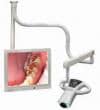.jpg)
Typically, orthodontic practices require patients to put down a significant down payment (usually 25%) before the records appointment. The remainder of the fee is then paid out in monthly installments over the course of treatment.
What worked in the pre-recession economy is no longer viable for many potential patients and/or their parents. When an economic event of monumental proportions occurs, such as the recent recession, businesses have to make changes. And so do orthodontic practices.
Today’s consumers want choices. Just look at what some car manufacturers are doing. They are letting customers come in and basically design their own new car in terms of color, interior, and features. A few years ago, fast food restaurants starting accepting credit cards. These businesses innovated based on giving customers more choices.
To increase starts, orthodontic practices have to offer patients and parents options other than ones with a high down payments. The economy has put the squeeze on many people who would love for their children to receive orthodontic treatment but cannot afford a high down payment. Give patients a range of options that makes them feel they are customizing their own payment plan.
While it is up to each individual office to determine how it wants to handle the fee situation, I suggest making it as easy as possible for the potential patients and their parents to do business with you. This means that the lower the financial requirements to get started, the more likely that the patient will start in that particular office.
The times have changed. And your practice must adjust accordingly.
Orthodontic Products’ readers are entitled to receive a 20% courtesy on the Total Ortho Success Seminar scheduled for April 8 to 9 in Chicago. To receive this courtesy, call (888) 973-0000 and mention "Ortho Products" or e-mail [email protected] with "Ortho Products" in the subject line.









